Pulli kolam or kolam with dots
The pulli kolam, or dotted kolam, have many variations which range from the purely geometrical to interlacing lines, stylised representations of animals and plants, benevolent gods with their vehicles or attributes, and votive objects like oil lamps or pots used for offerings.

In front of each house, just before sunrise, passers-by will be intrigued by the gestures of hands, repeated many times, raising dot after dot on what looks like a powdered canvas. These visual markers placed on the ground, these budding constellations created by women who fill up this earthly sky with their culture and imagination are the starting point of a graphic adventure. Dots echoing other dots align themselves, either face to face, or in a staggered pattern. A connect-the-dot game waiting for a line to venture out and shape the walls of a divine palace, the silhouette of an animal, a bird or an everyday object. Dots inviting flexible, graceful, curved lines to pay tribute to the happy variety of real or imaginary flowers.
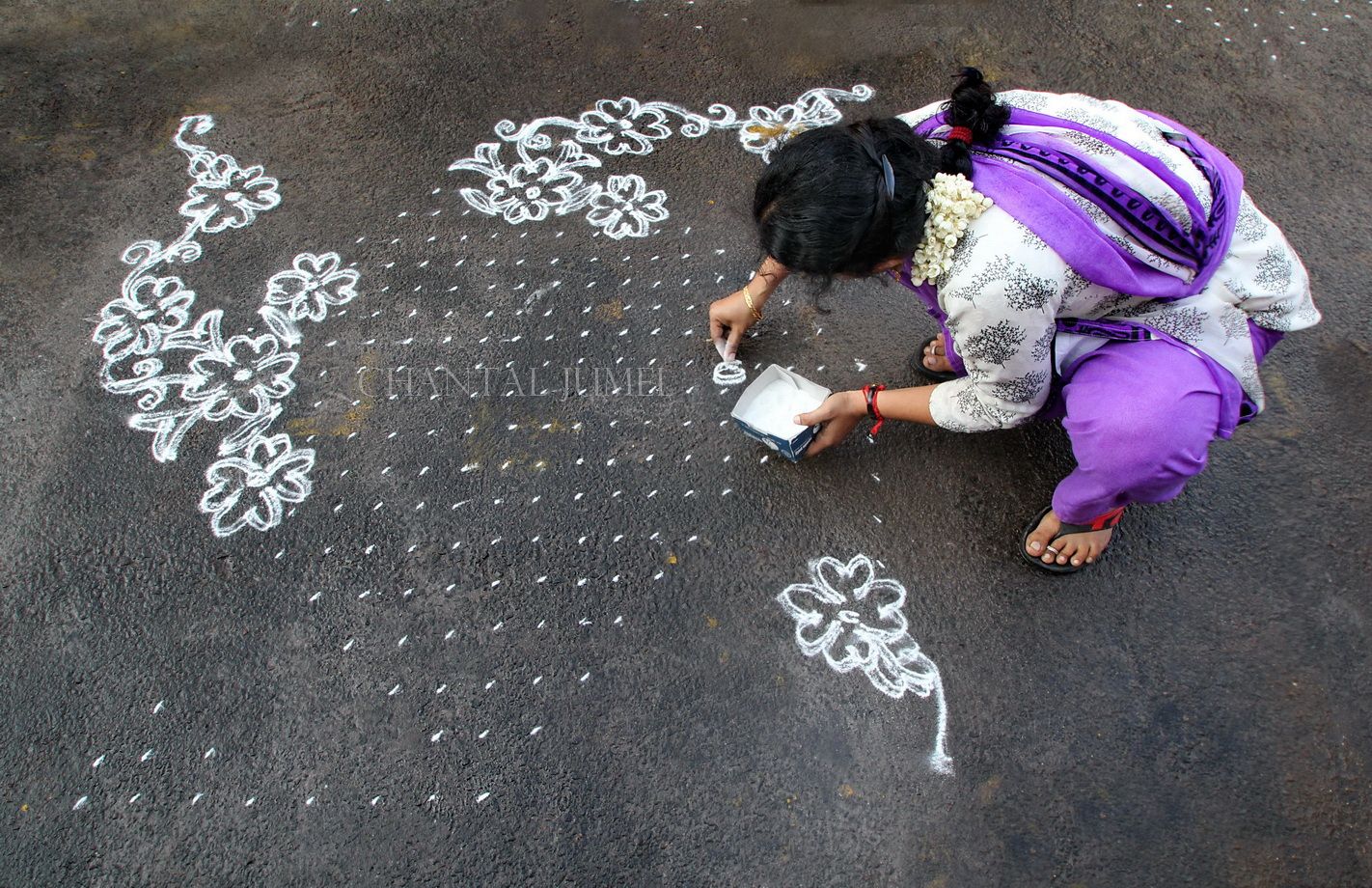
Red, white, grey, yellow or black, the dots find their place on women’s and men’s foreheads, as well as on children’s cheeks and sometimes on domestic animals. They are drawn more particularly on the beams and sills of the main entrances of homes or on the threshold of the temple gate as a sign of protection and to drive evil eye away.
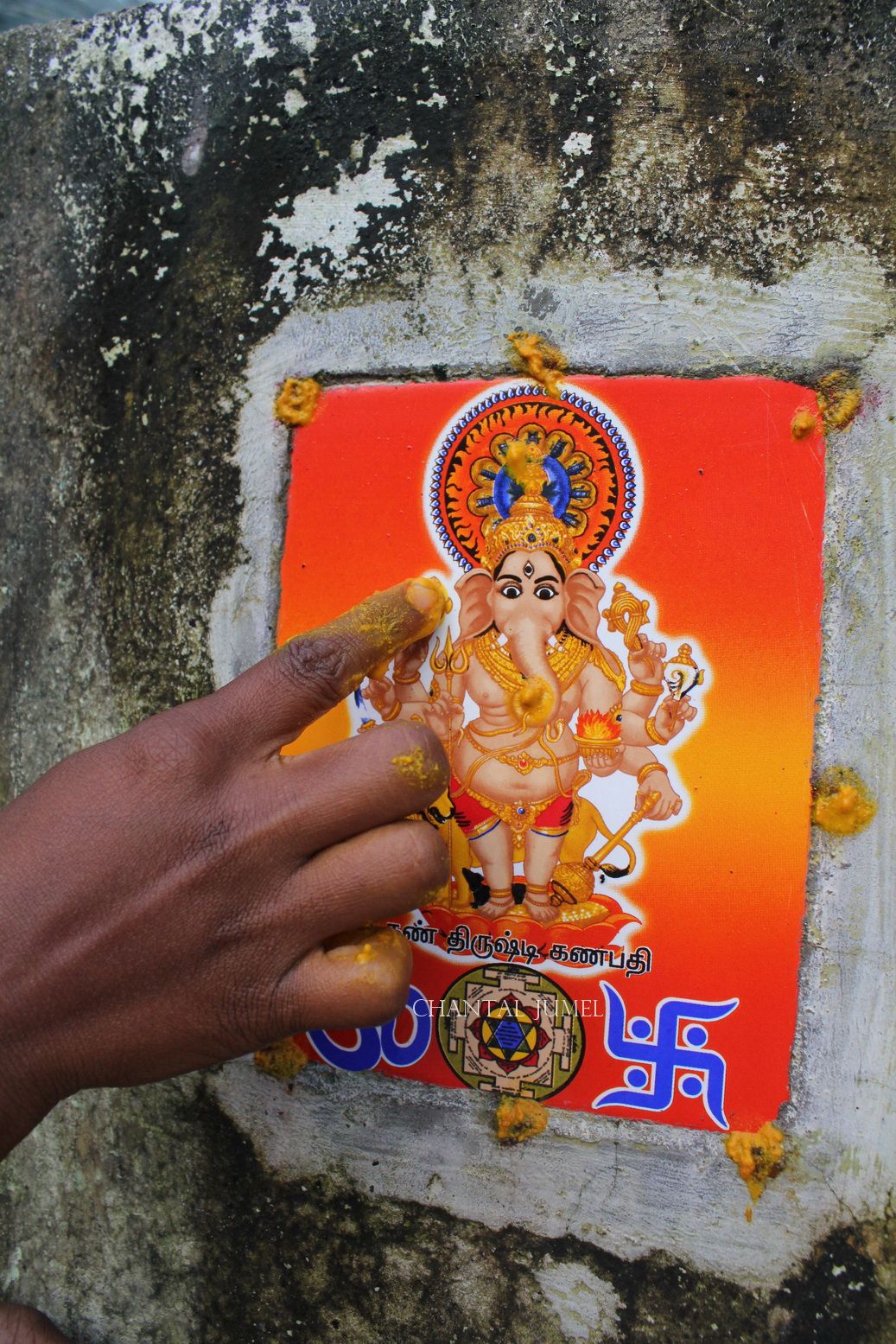
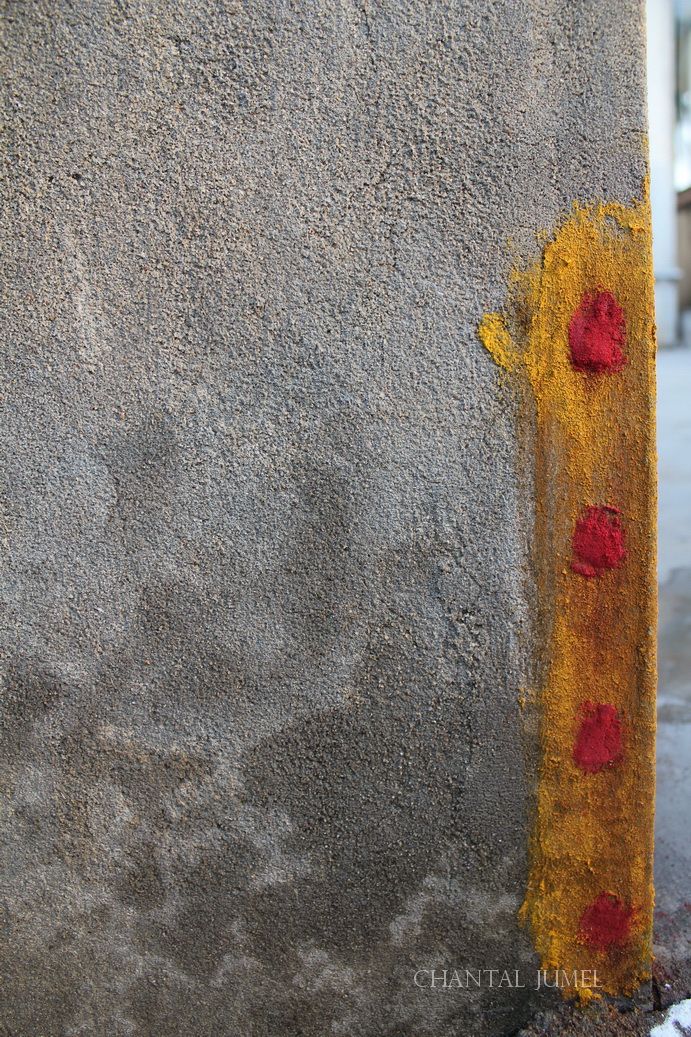
The dot known as bindu in Sanskrit and pottu or pulli in Tamil perfectly illustrates the universe in its most concentrated shape, as well as the original zero, called shûnya bindu or shûnya chakra pointing towards the concepts of “void” or “non- creation”. In the West a few centuries later, in his masterful analysis of painting elements and form theory, Wassily Kandinsky explained that the geometric point is both total immateriality and the beginning of a graphical exploration. Similarly, the graphic adventure is expressed for the Tamil image-makers as the ultimate bond between dot and line. The dot is Shiva, the line is Sakti and Shivaites believe that the dot would not exist without the line. For the Vaishnavites, the dot and the line embody the happy union between Krishna and Radha, or the royal couple Rama and Sita. This graphical aphorism illustrates in a highly symbolic manner the conjunction of the eternal pairs of opposites that remain complementary, that is, the changeless male purusha and the dynamic feminine prakriti. Mr J. K. Mohana Rao renders these two values in a sensitive poem, in the form of an intimate if not amorous conversation between a dot and a line:
Line:
As the moon revolves around the Earth
and as the Earth revolves around the Sun
I revolve around you countless times and in countless ways -
up and down, and in and out
north and south, and east and west
straight and cross, over and under
and round, and round...
Dot:
Unless you are present
and unless you go around me
my existence does not count
Line:
Without you I am lost in myriad ways
with neither a start nor an end
and neither here nor there
Dot:
Dots are just dots
neatly arranged in rows after rows
like letters in the alphabet
You are the one that makes words out of these letters -
Pretty patterns with beautiful words
Thoughtful motifs with meaningful words
Line:
You are constancy, and I am motion
You are the heart, and I am emotion
You are the beginning, and I am the end
With you I am one
Without you I am none
The gentle breeze and the rustling leaves
The glowing sky and the rippled river
overhear the conversation and wondered
whether Ardhanarisvara was speaking before them.
J. K. Mohana Rao
Drawing a pulli kolam
The spatial order of a pulli kolam is determined by the numerous dots which aligned in rows (varisai). In an idukku pulli kolam, the dots are aligned in staggered rows; while in a ner pulli kolam, they are lined up in neat rows.
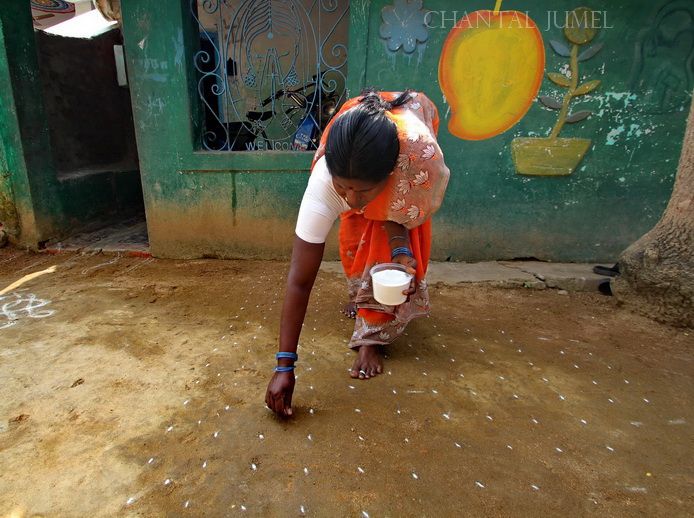
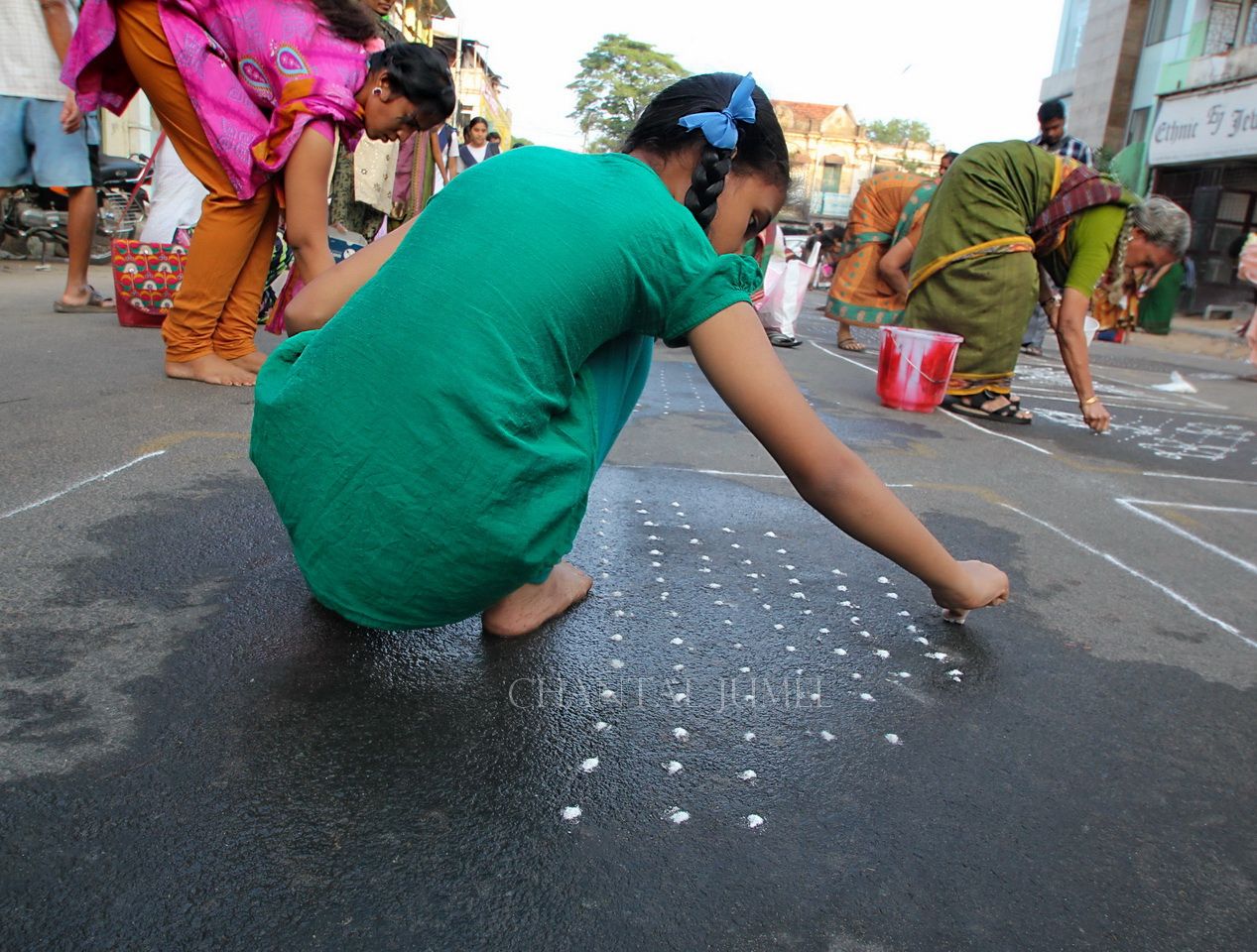
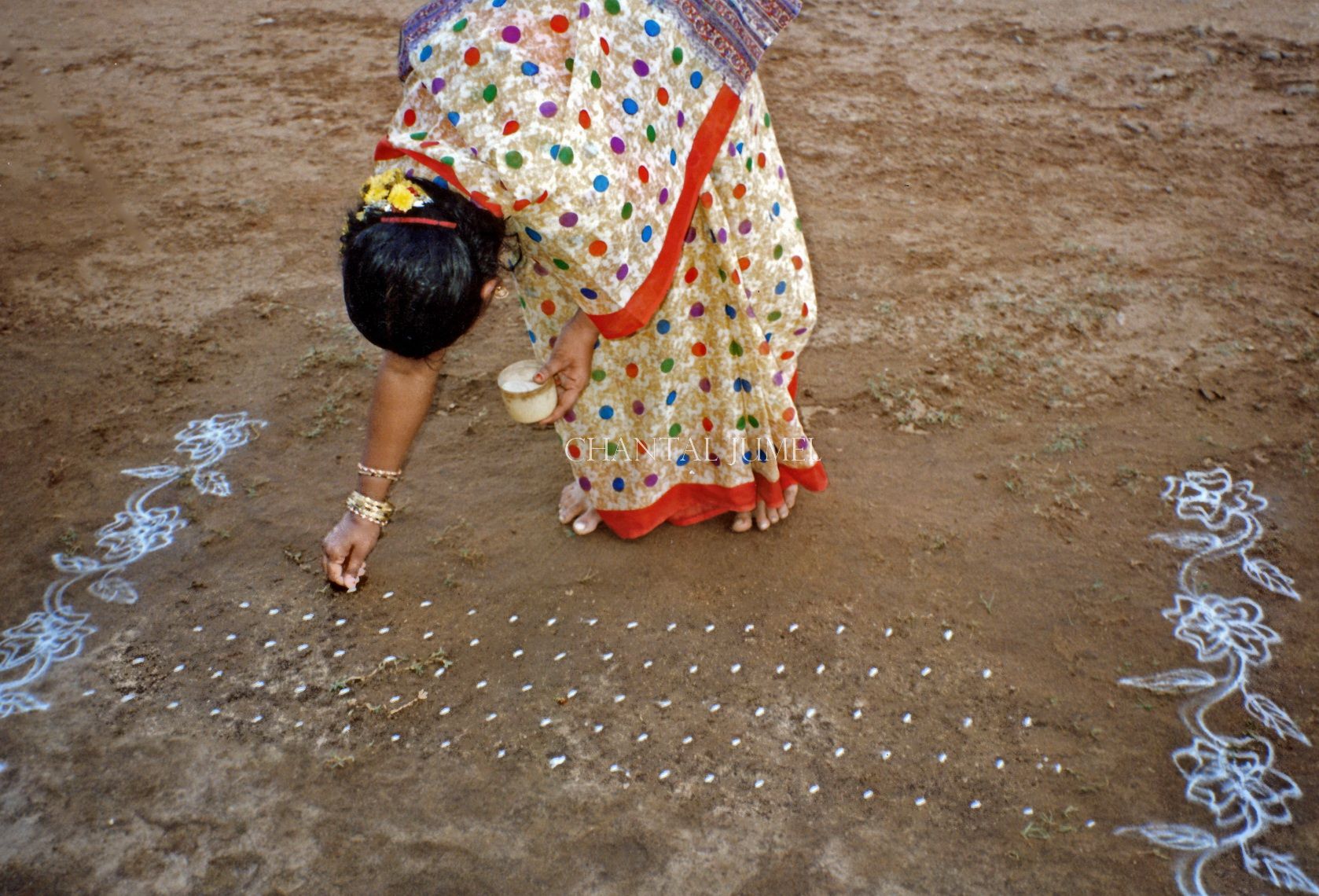
To draw a pulli kolam, the dots can be joined with straight or winding lines, or the dots of a single continuous line can be circumvented with criss-crossing and intersecting lines. These dots can also be circumvented by several single or continuous overlapping lines. (See Sikku kolam or interlaced kolam).
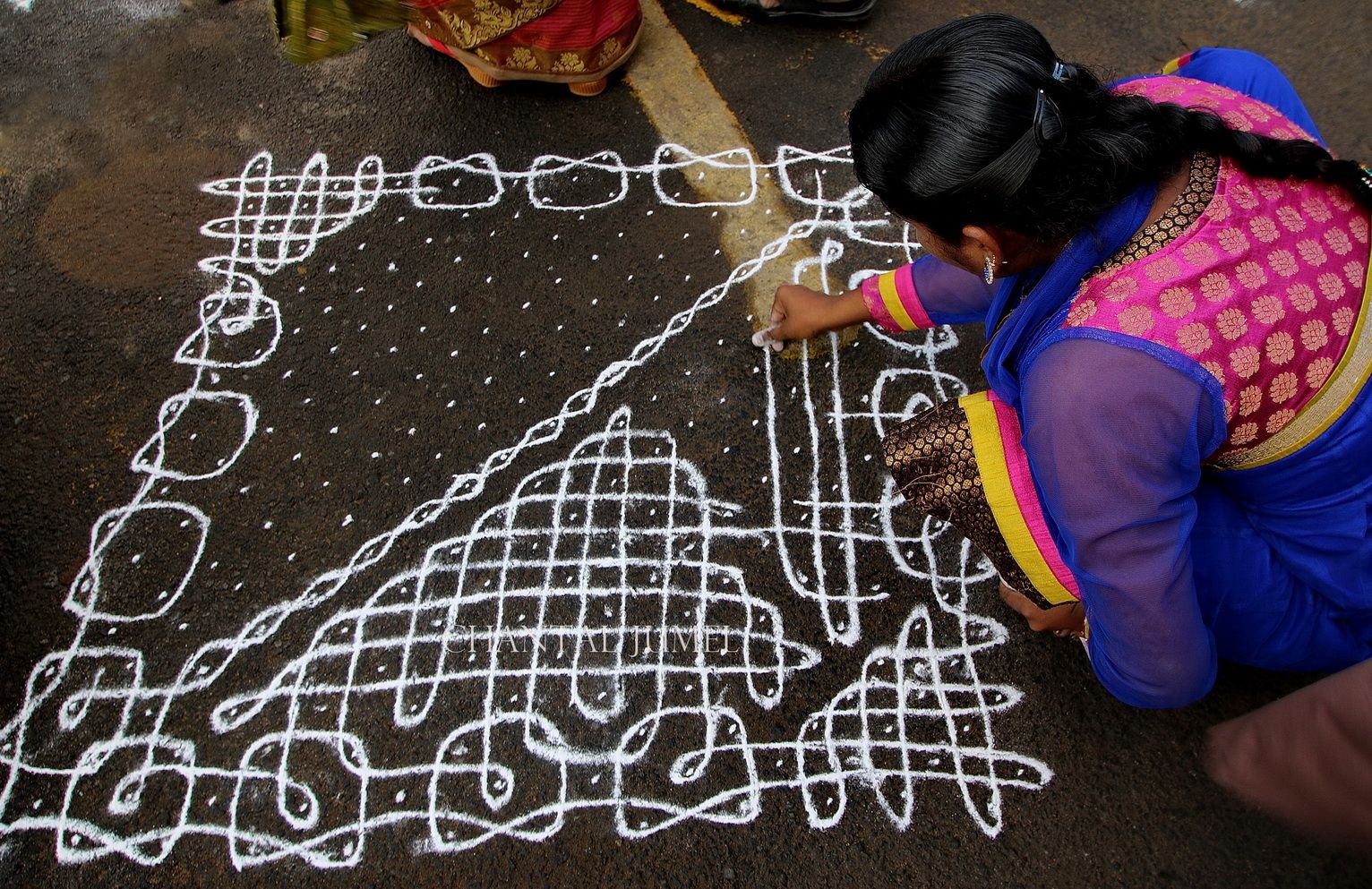
The simplest way to draw a kolam is to take the powder between the thumb and forefinger, and guide it onto the ground to obtain a dot or a line. The pulli kolam, or dotted kolam, have many variations which range from the purely geometrical to interlacing lines, stylised representations of animals and plants, benevolent gods with their vehicles or attributes, and votive objects like oil lamps, or pots used for offerings.

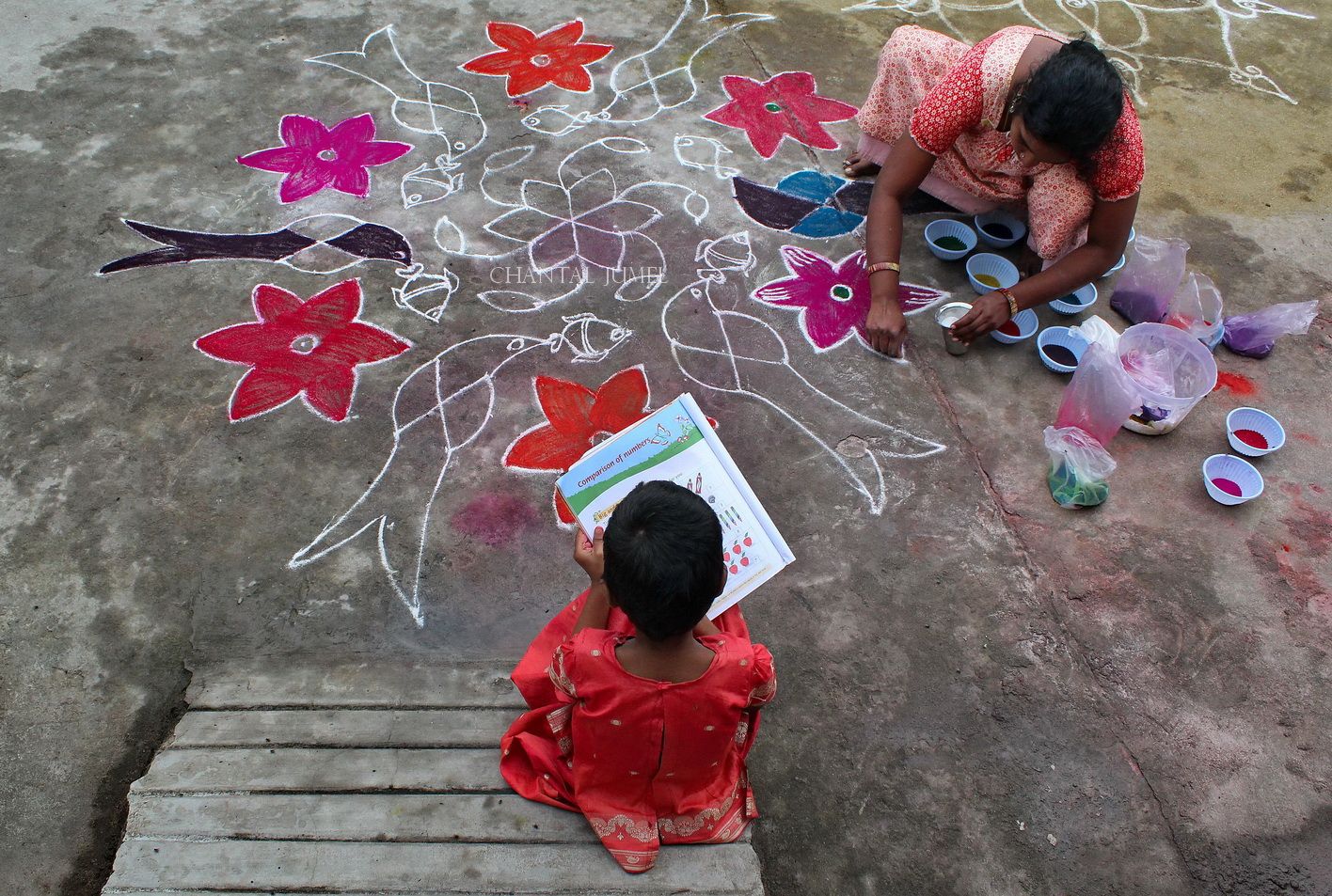

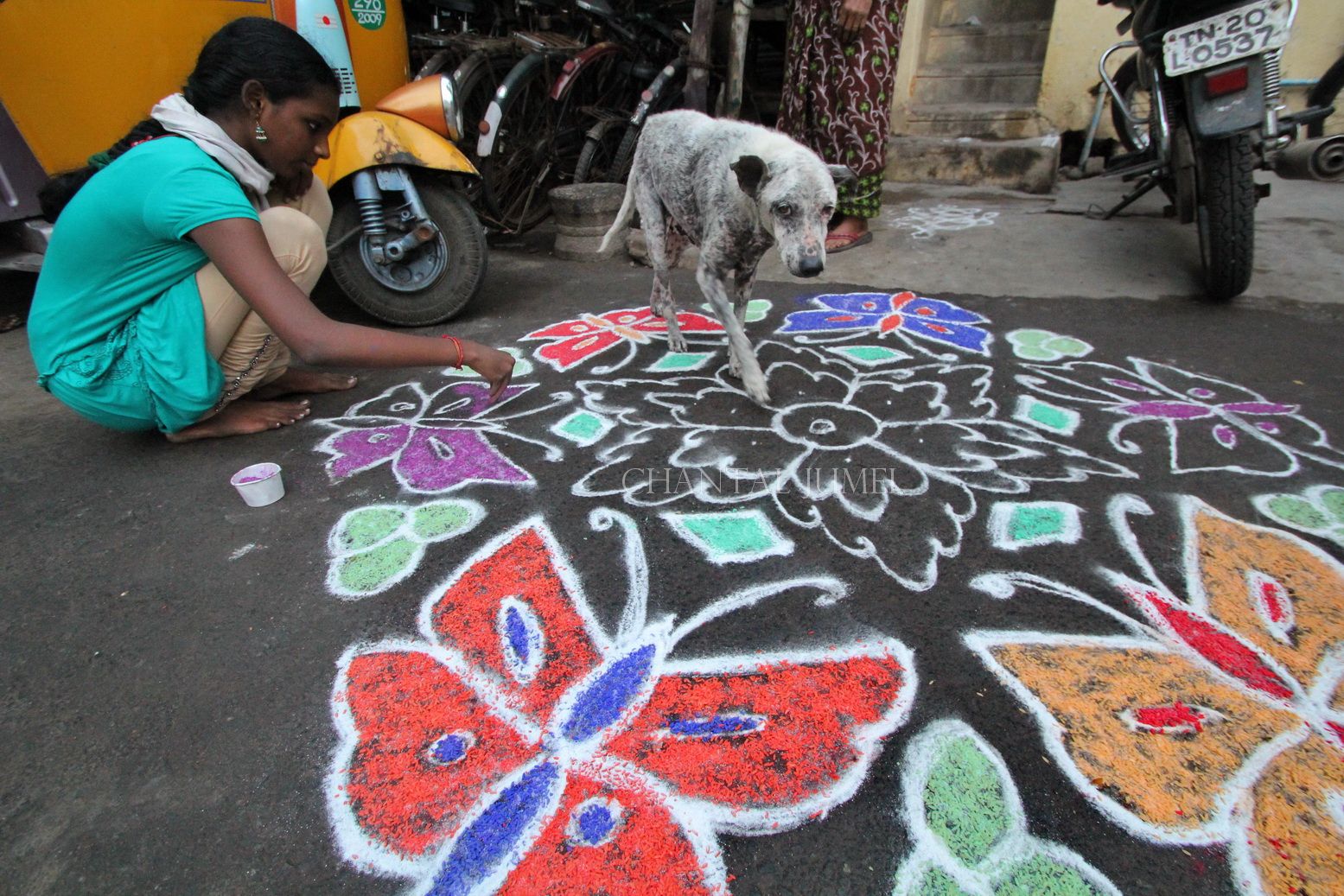

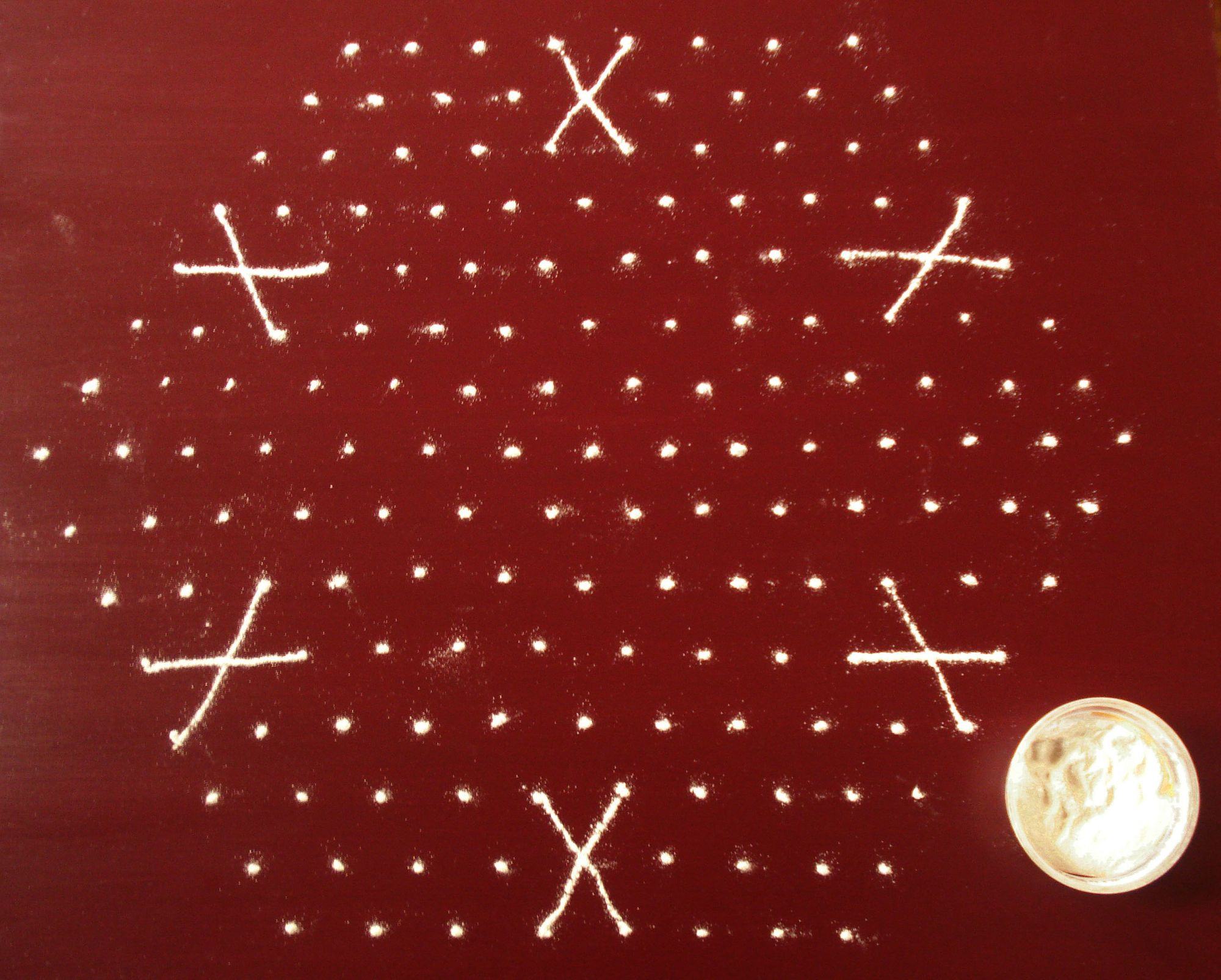
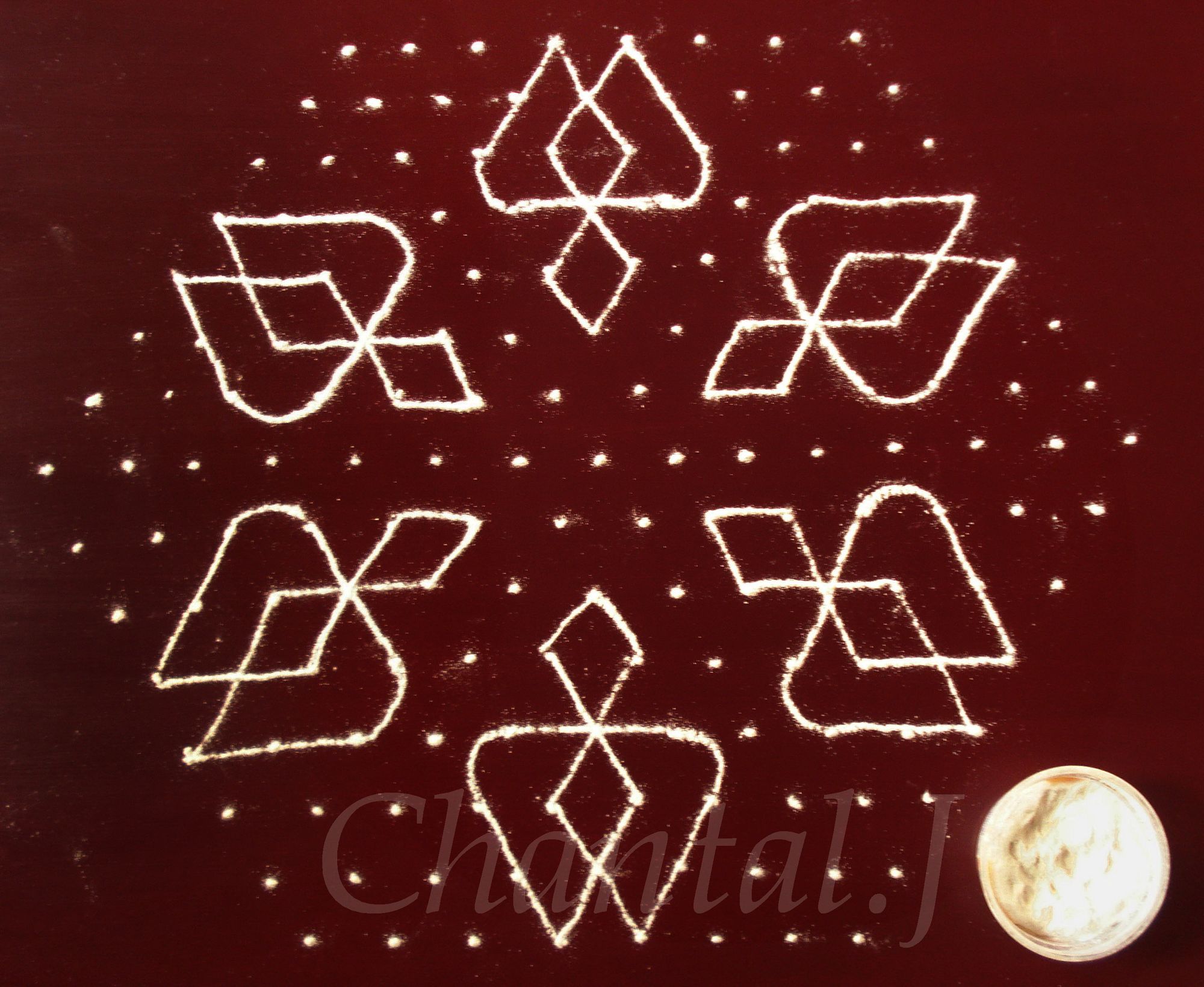
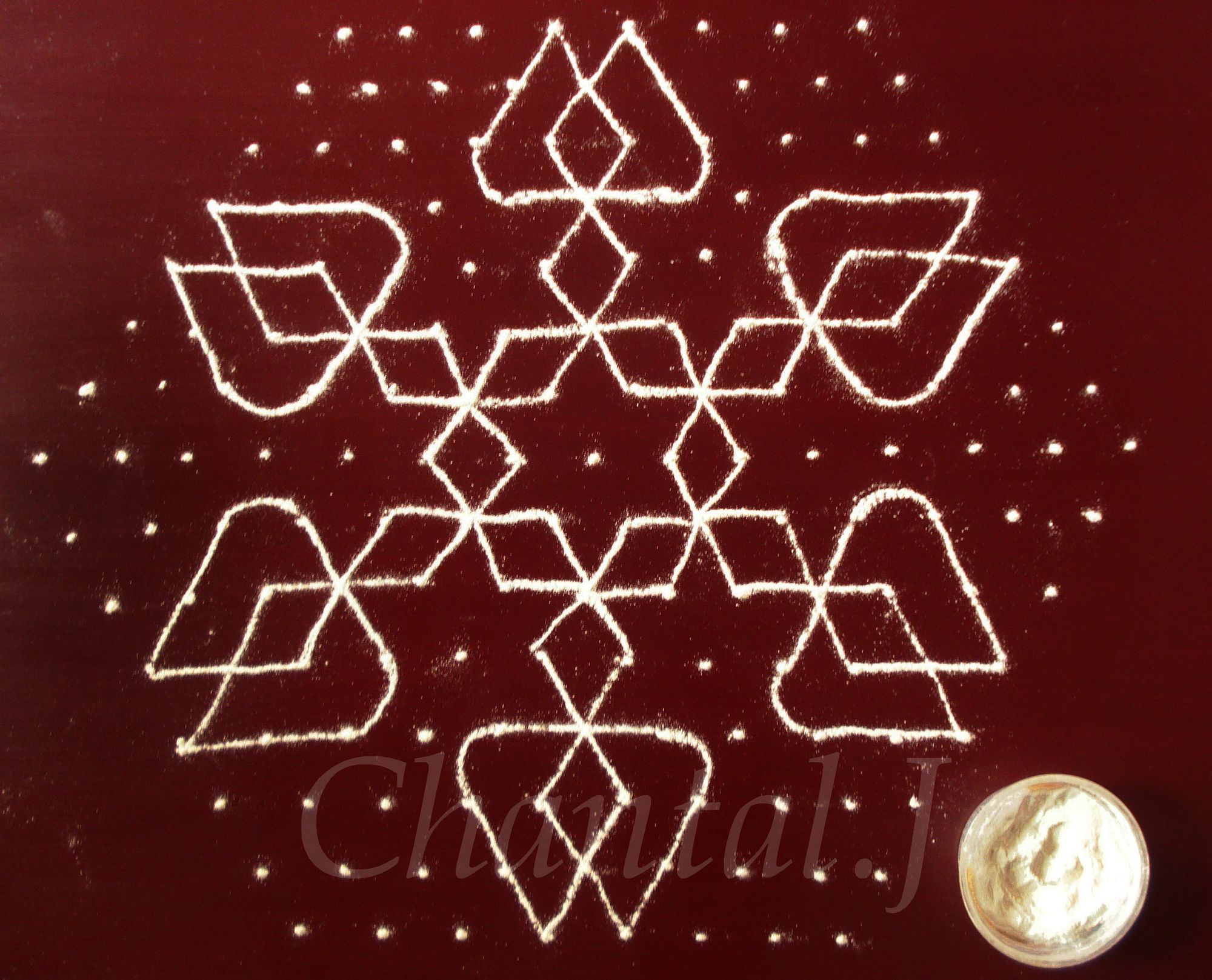
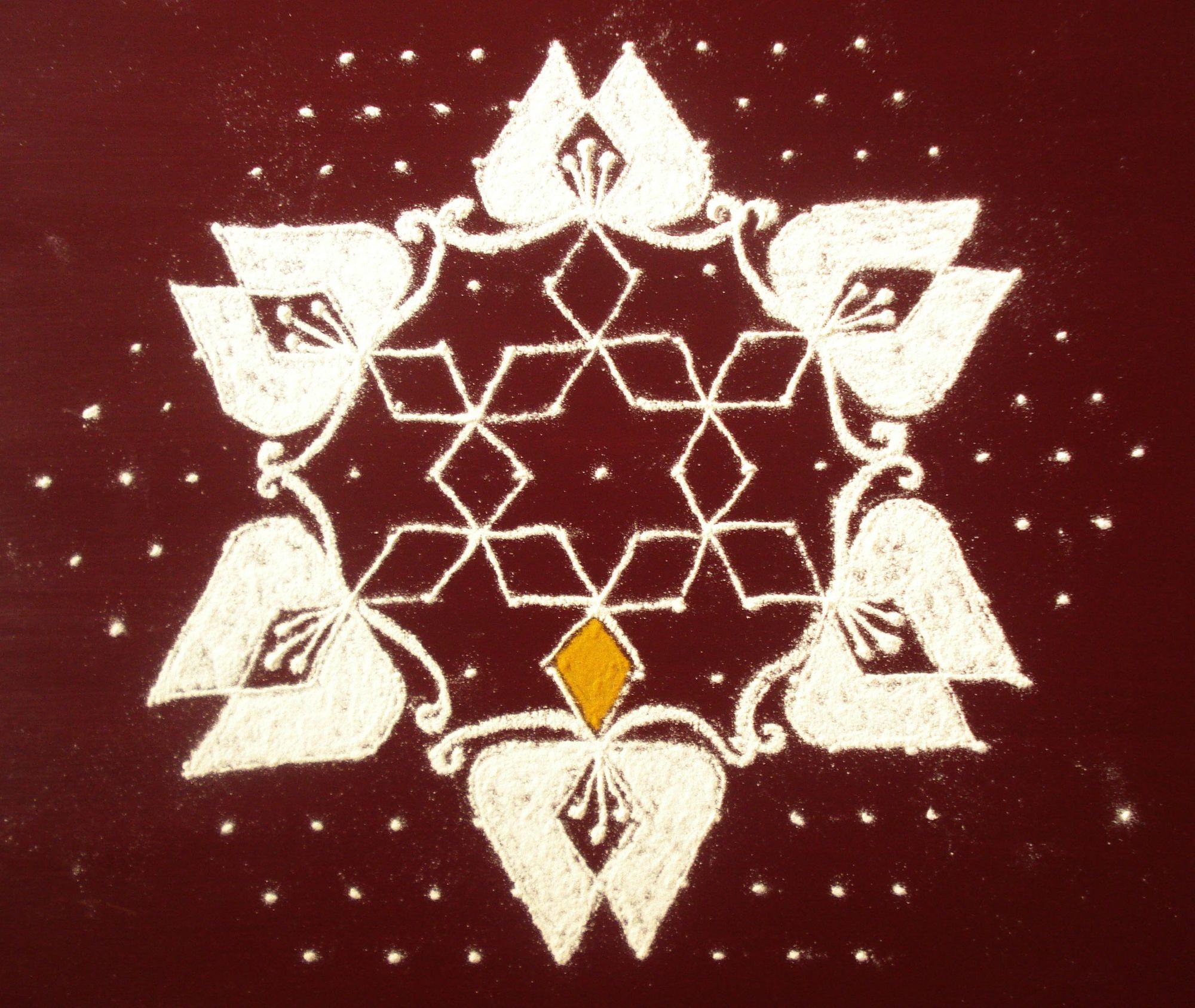

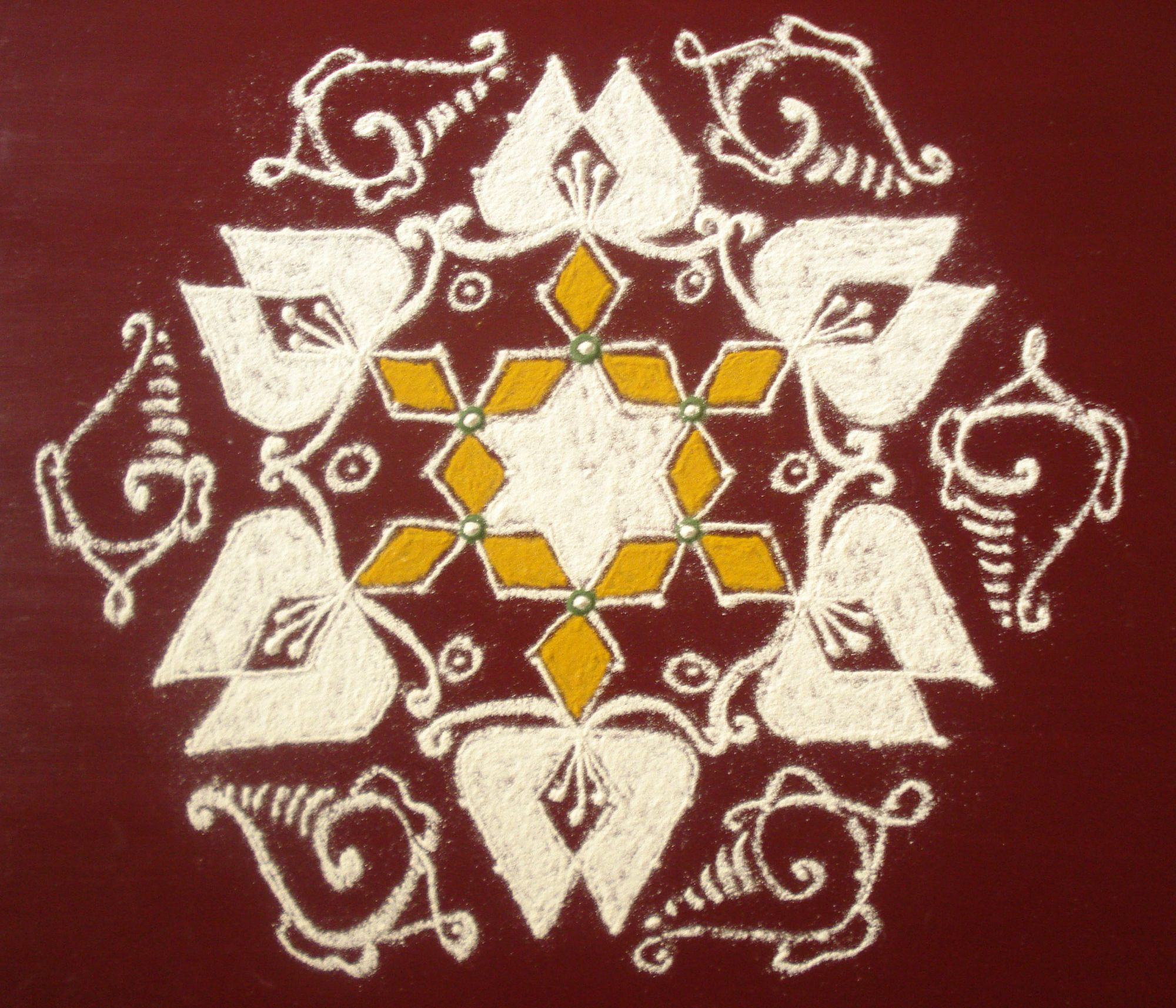
The article is a translated excerpt from my book : Voyage dans l'imaginaire indien, Kôlam, dessins éphémères des femmes tamoules.
